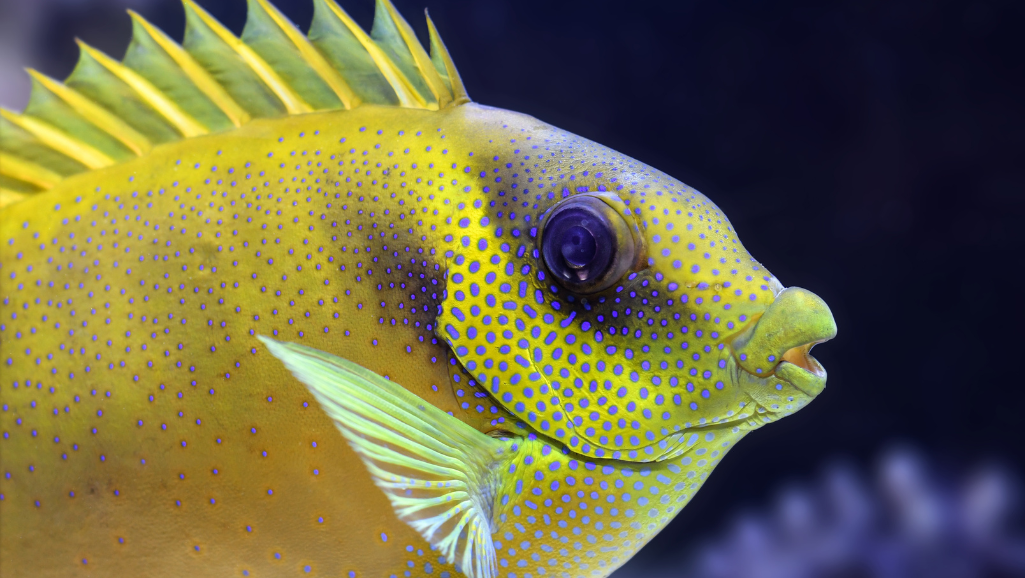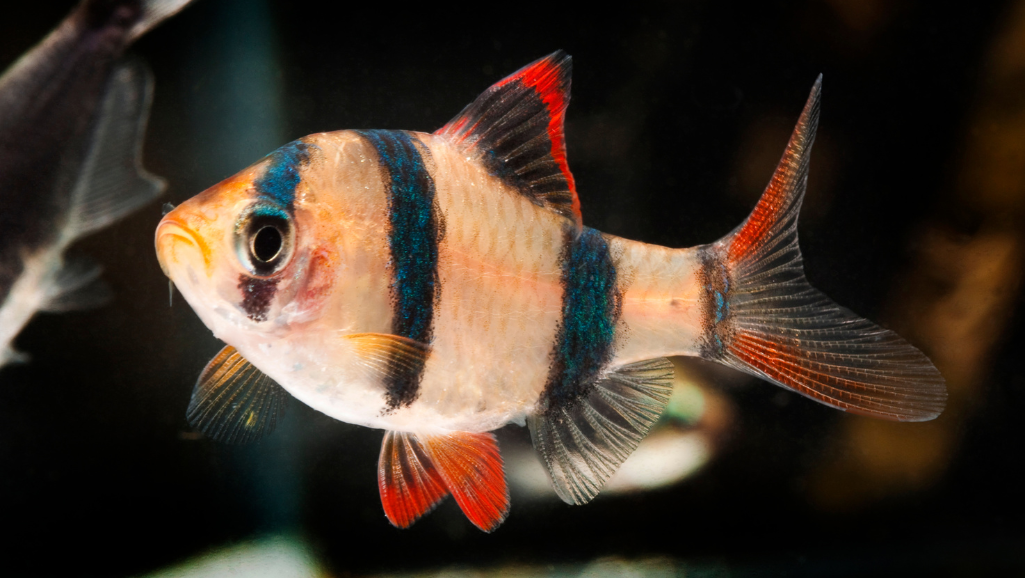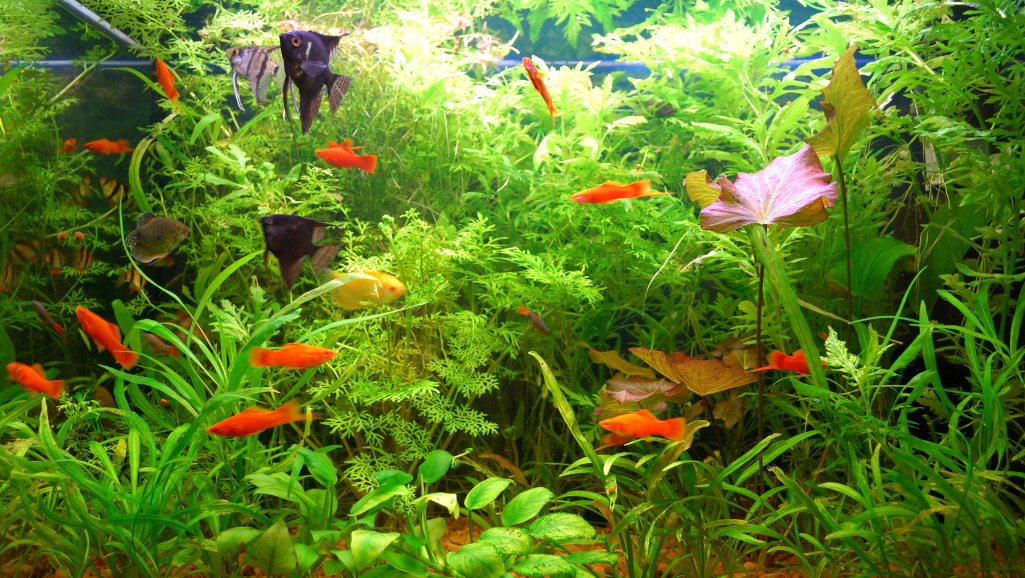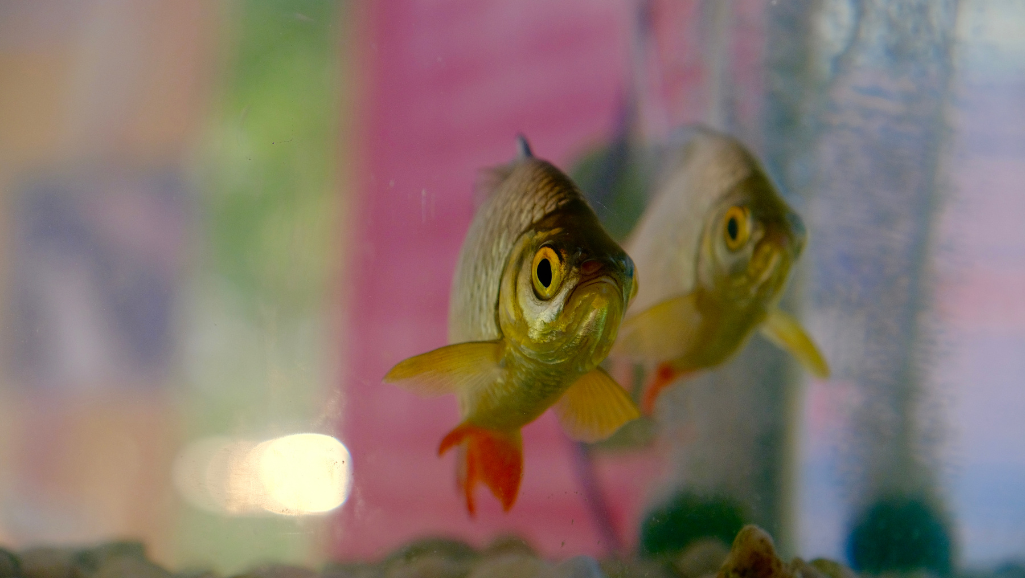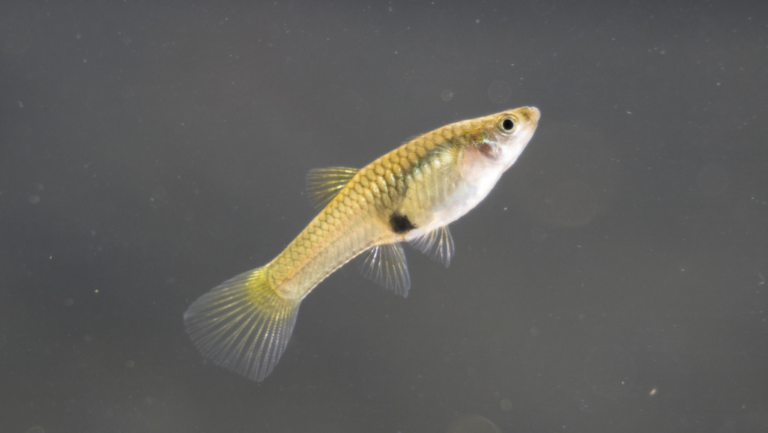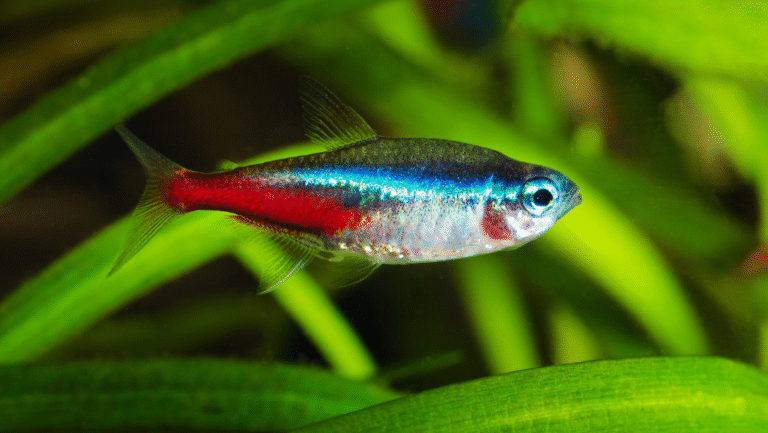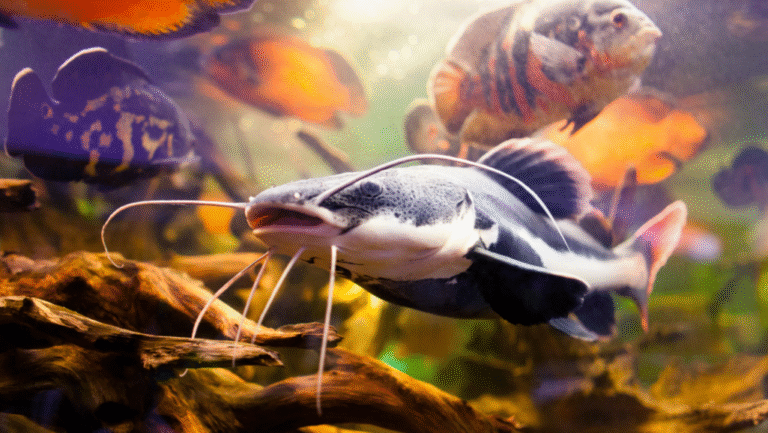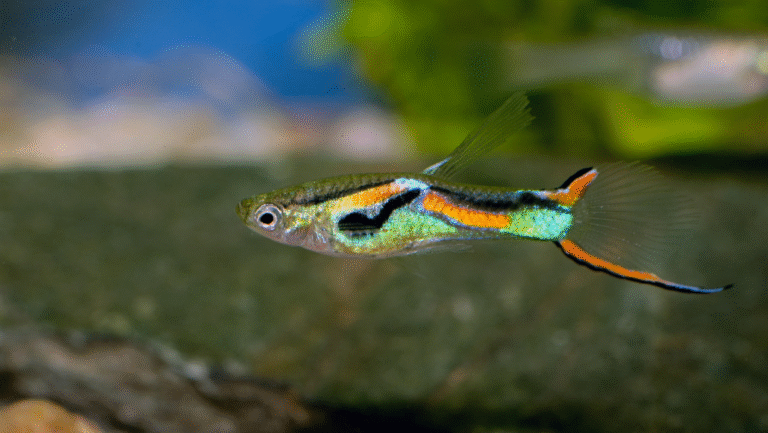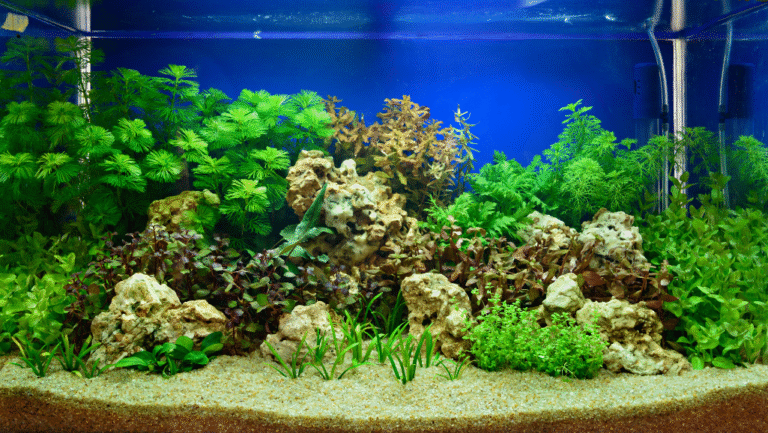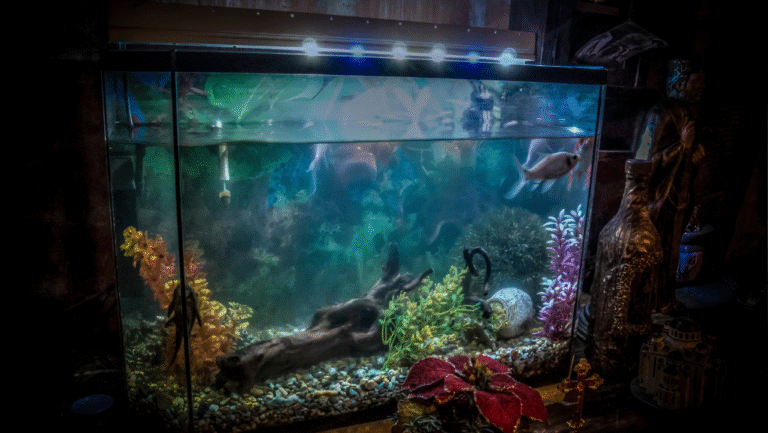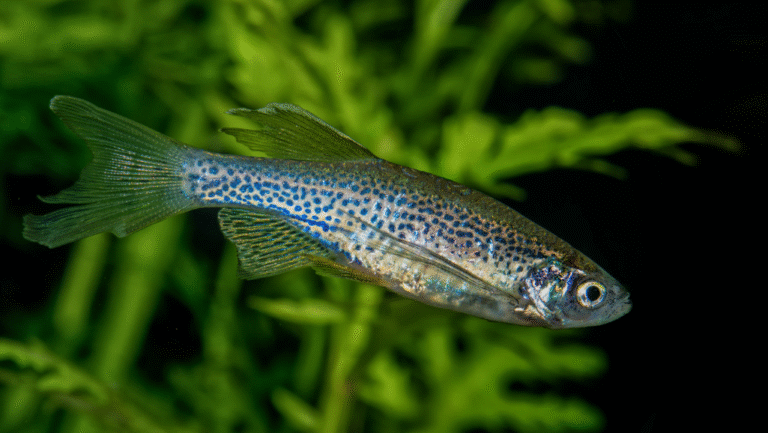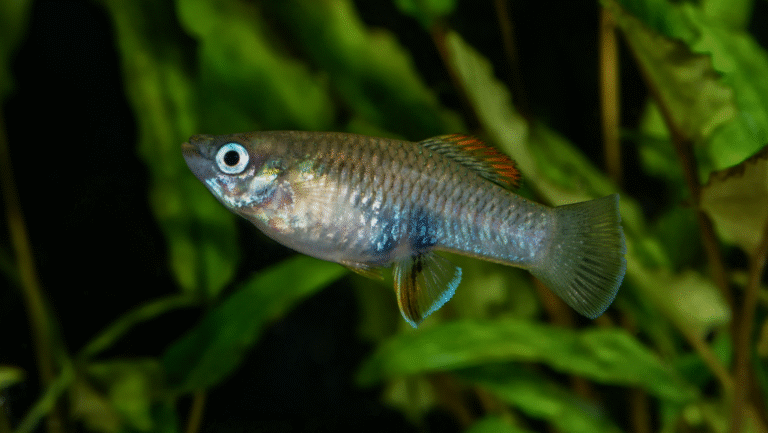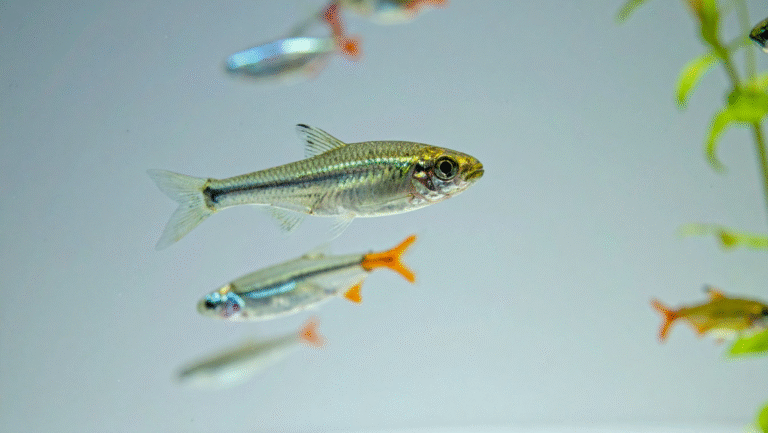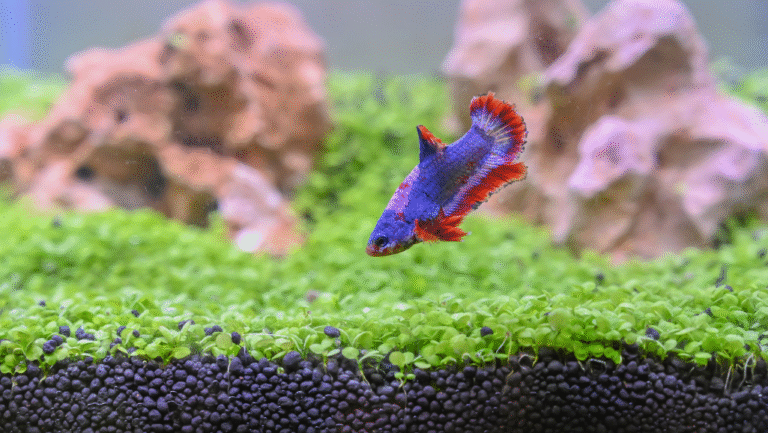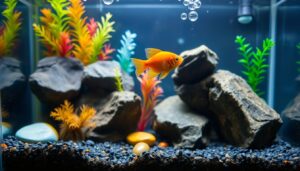Gold Barbs light up the world of freshwater fish with their bright golden-yellow bodies and lively swimming. They are known for their hardiness and beauty, making them a favorite among aquarists. These small fish add color and life to any aquarium.
Gold Barbs are easy to care for and are peaceful, making them perfect for both new and experienced fish keepers. A detailed care guide is key to making sure these fish not only survive but also thrive in their home.
Gold Barbs are great in community tanks because they love to be in groups. They enjoy the safety and fun that comes with having six or more friends. Learning about Gold Barb care can make your aquarium better and longer-lasting.
Key Takeaways
- Understanding the needs of the Gold Barb is fundamental to keeping a thriving aquarium.
- The proper habitat size, water quality, and group dynamics are pivotal to their care.
- Gold Barbs have a sociable nature, requiring companionship to foster a vibrant aquatic community.
- A balanced diet, regular tank maintenance, and specific water conditions are essential for their well-being.
- Awareness of their origin and characteristics can guide aquarists in replicating the best environment for these freshwater fish.
- Breeding Gold Barbs can be a rewarding experience with the right knowledge and set-up.
Understanding the Basics of Gold Barb Fish
The world of aquatic fish is full of colorful species. The Gold Barb is one of them, loved for community tanks. They come from the freshwater habitats of Southeast Asia, adding life and color to aquariums.
Origins and Natural Habitats
Gold Barb, or Puntius semifasciolatus, is from China, Vietnam, and Taiwan. They live in slow rivers and streams. They also live in swamps and irrigation channels.
This shows they can adapt well. They are great for both new and experienced fish keepers. For tips on setting up their tank, check this guide.
Physical Characteristics and Sexual Dimorphism
Gold Barb fish are known for their vibrant colouration and Gold Barb physical traits. They can grow up to 7.0 cm. They have a golden color and a black lateral line.
They show sexual dimorphism. Males are brighter and slimmer. Females are larger and rounder. These differences make them easy to tell apart and breed.
Behavioral Traits and Social Structure
Gold Barbs are peaceful social fish. They live in groups, which reduces stress. They enjoy schooling and socializing.
They get along well with other peaceful fish. Watching them in a tank is both beautiful and educational. It shows the complex social lives of aquatic fish.
Knowing about Gold Barb care is key. It helps you understand their needs and behavior. They bring color and life to your tank, showing the beauty of underwater life.
Creating Ideal Tank Conditions for Gold Barbs
To keep Gold Barbs healthy and happy in your freshwater fish tank, focus on the right tank conditions. These fish love environments that remind them of their natural homes. The right water quality, temperature, and tank setup help them stay colorful and healthy.
Good water quality is key for Gold Barbs. They prefer a pH between 6.0 and 8.0, which is slightly acidic to neutral. Water hardness should be between 2 – 10 dGH. This helps them stay healthy without getting stressed.
Keeping the water temperature stable is also important. Gold Barbs do best in temperatures between 64 to 75°F (18 to 24°C). Using an aquarium heater helps keep the temperature steady. This prevents stress and disease.
- A minimum tank size of 20 gallons is essential for giving these active swimmers enough space. More space tends to reduce aggression and improve overall health.
- Implementing a moderate flow through filters mimics the gentle river currents they are accustomed to, which is vital for their well-being.
- Decorating the freshwater fish tank with a mix of hiding spots like caves and plants not only adds aesthetic value but also significant functional benefits. Plants help in oxygenating the water and provide areas for the fish to explore and relax.
In conclusion, creating ideal tank conditions for Gold Barbs makes their lives better. It turns your aquarium into a lively ecosystem. These conditions help them thrive, showing off their natural behaviors and living a long, healthy life.
Gold Barb Diet and Nutrition
Gold Barbs have omnivorous feeding habits and can thrive in different water conditions. A balanced diet is key to their health and vibrant colors.
Omnivorous Appetite: Balancing Plant and Animal-Based Foods
Gold Barbs need a mix of plant and animal foods to eat like they do in nature. They should mainly eat high-quality flake foods. Add live or frozen foods like brine shrimp and daphnia for variety. Also, include vegetable-based foods like Spirulina flakes or pellets to keep them healthy and happy in your aquarium.
Feeding Frequency and Portion Sizes for Optimal Health
Feeding them often helps them act naturally, as they do in the wild. Feed them small amounts two to three times a day. This keeps them healthy and prevents water quality problems and health issues. Regular, small meals are best for their well-being.
For better aquatic fish care, learn about Gold Barb nutrition. Also, keep the water clean by testing it often and maintaining filters well, as shown on aquatic life support platforms. This will help your Gold Barbs stay healthy and vibrant.
Following these diet and feeding frequency tips will help your Gold Barbs thrive. They will show off their colors and lively behavior, making your aquarium more beautiful.
Companion and Tank Mates: Building a Community Aquarium
Creating a community aquarium is more than just adding water and fish. It’s about making a harmonious aquatic ecosystem where all species can do well. Gold barbs, with their bright colors and lively nature, are great additions. When picking tank mates, look for species that are as peaceful and need the same environment as gold barbs.
- Peaceful Cyprinids: Fish like the Cherry Barb are perfect. They are calm and fit well in a community setting without being aggressive.
- Loaches and Garra species: These fish live at the bottom and help keep the tank clean. They live peacefully with barbs.
- Benthic Cyprinids: They add balance by living in different parts of the tank. This ensures all areas are well-populated.
Don’t pair gold barbs with long-finned fish. Gold barbs might nip at them, upsetting the tank’s peace. Instead, choose species that are similar in size and activity to keep the tank balanced.
For beginners, think about every part of tank life. From water quality to each fish’s needs, every detail is important for a thriving tank. For more tips on keeping a healthy community aquarium and finding good tank mates, check out this guide on barb fish.
Remember, the goal is to create a natural and harmonious aquatic ecosystem. Where each species helps the others, leading to a healthier, more vibrant tank.
In conclusion, picking the right tank mates for your gold barbs is key. It ensures their health and happiness and is vital for your community aquarium. By choosing compatible species and considering their needs and temperaments, you can create a peaceful underwater world that thrives with life.
Gold Barb Breeding Tips and Techniques
Breeding Gold Barb fish can be very rewarding. With the right planning and execution, you can succeed. Here, we share important strategies for Gold Barb spawning and fry care. These tips are great for both new and experienced aquarists.
Setting Up the Breeding Tank: Environment Essentials
To start the breeding process for Gold Barbs, a special breeding tank setup is needed. The tank should look like their natural home to help them spawn. Here are some important things to consider:
- Size: A tank of at least 75 liters (20 gallons) is best for their natural behaviors.
- Water Parameters: The water should be slightly acidic, with a pH of 6.5. Keep the temperature between 24°C to 26°C (75°F to 79°F).
- Environment: Add fine-leafed plants or spawning mops for safe spots for egg scatterers. Soft, low-light conditions are also important.
For more information on creating the perfect environment for Gold Barbs and other fish, check out this guide on aquarium setups.
From Spawning to Fry: The Breeding Process
The Gold Barb spawning process is quite interesting. First, condition the adults with high-quality live foods. Then, they spawn. Females can lay up to 400 eggs, which the male fertilizes as they scatter around the tank.
- The eggs hatch in 2-3 days. It’s important to remove the adult fish right after spawning to protect the eggs.
- Fry care starts with feeding them infusoria or finely crushed flake foods. As they grow, move to larger foods like baby brine shrimp.
Good feeding and water quality are crucial for the fry’s health and growth. Regular tank maintenance and water checks are key to raising strong Gold Barb juveniles.
Conclusion
In this Gold Barb care guide, we’ve covered the basics for these thriving freshwater fish. They are as beautiful as Golden Dwarf Barbs. Gold Barbs grow to about 2-2.8 inches, fitting well in most aquariums.
They thrive in water between 68-77°F (20-25°C) and pH 6.0-7.5. A hardness range of 4-10 is also key for their health and color.
Gold Barbs can live 4-6 years with proper care. This makes them great for both new and seasoned fish keepers. Keeping them in groups of at least six helps them feel less stressed.
Feeding them a mix of plants and proteins is essential. This diet supports their active lifestyle. Also, following these aquarium guidelines helps breeders see eggs hatch in 24-36 hours.
Gold Barbs show nature’s ability to adapt and thrive. Whether it’s the Gold Barb or other colors like Cherry and Rosy, each adds something special to the aquarium. Creating a home for them is rewarding and fun.
Watching their behaviors and interactions is a joy. So, starting a journey with Gold Barbs promises to be fulfilling. It’s a chance to care for these amazing creatures.

